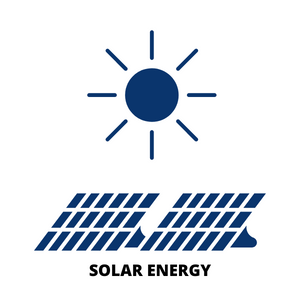India’s solar industry reached an impressive milestone in the first half of 2024 by adding 14.9 GW of new capacity. This marked a staggering 282% year-over-year increase compared to the same period in 2023, as reported by Green Energy Army. The installations surpassed all previous half-yearly and annual records, setting a new benchmark for the country’s renewable energy sector. This dramatic rise can largely be attributed to the commissioning of several projects that were previously delayed, highlighting the resilience and adaptability of the industry.

Quarterly Performance and Challenges
In the second quarter of 2024 alone, India added 5 GW of solar capacity, which was up by 170% from the 1.8 GW installed in the same quarter of the previous year. However, there was a noticeable quarter-over-quarter decline of 49% from the 9.9 GW installed in the first quarter of 2024. This fluctuation was largely due to the surge of installations in the first quarter as developers rushed to commission projects ahead of the reimposition of the Approved List of Models and Manufacturers (ALMM) order from April 2024. Despite this drop, the year-over-year growth remained strong, demonstrating the sector’s ongoing momentum.
During Q2 2024, approximately 4.3 GW of large-scale solar projects were commissioned, including nearly 1.8 GW of open access projects. Although there was a 55% quarter-over-quarter reduction in large-scale solar capacity additions, these figures still represented a 191% year-over-year increase, underscoring the sector’s underlying growth trajectory.
ALMM Reimposition and Grid Connectivity Issues
The reimposition of the ALMM order presented significant challenges, especially for open access projects. This regulation, aimed at enhancing the quality of solar modules and reducing dependence on imports, inadvertently slowed down several projects due to delays in obtaining certified equipment. Furthermore, issues with grid connectivity and transmission infrastructure, particularly in regions like Rajasthan, further complicated the commissioning of large-scale solar projects during the quarter. These challenges highlight the critical need for better infrastructure planning and regulatory stability to sustain the sector’s growth.
Leading States and Their Contributions
Rajasthan, Gujarat, and Karnataka emerged as the frontrunners in large-scale solar capacity additions during Q2 2024, contributing 30%, 22%, and 21% of the total installations, respectively. These states have consistently led India’s solar revolution, thanks to their favorable policies, abundant solar resources, and proactive local government support. As of June 2024, Rajasthan alone accounted for 29% of the cumulative large-scale solar capacity in India, followed by Gujarat with 15% and Karnataka with 14%.
Tendering and Auction Trends
The second quarter of 2024 saw 10.7 GW of new tenders announced, a 22% decrease from the 13.6 GW announced in Q2 2023, and a significant 65% drop from the 30.7 GW announced in Q1 2024. This decline was partly due to delays in the Ministry of New and Renewable Energy (MNRE) releasing the year’s bidding trajectory, coupled with concerns over the tepid response and higher bids following the ALMM reimposition.
Despite these challenges, the solar auction market remained relatively stable, with 6.7 GW of projects auctioned in Q2 2024, mirroring the activity from Q2 2023. However, there was a sharp decline of 73% from the 25.1 GW auctioned in Q1 2024, reflecting a more cautious approach by developers amid regulatory uncertainties.
First Half 2024 Overview
In the first half of 2024, India added a total of 20.8 GW of new power capacity, with renewable sources, including large hydro, accounting for 81% of this addition. Solar energy alone made up 71% of the new capacity, reinforcing its role as the leading contributor to India’s renewable energy landscape. As of June 2024, the country’s cumulative installed solar capacity reached 87.2 GW, with utility-scale projects comprising 87% and rooftop solar 13%. Solar now represents 19.5% of India’s total installed power capacity and 44% of the total installed renewable energy capacity.
The first half of 2024 also witnessed the announcement of 41.4 GW of new tenders, marking the highest half-yearly bid invitations and reflecting a 51% increase from 27.5 GW in the first half of 2023. Additionally, 31.8 GW of projects were auctioned during this period, a 321% jump from 7.6 GW in 1H 2023, setting new records for both half-yearly and annual auction volumes.
Market Dynamics and Future Outlook
The robust demand from the commercial and industrial (C&I) sector is expected to drive further growth in open access and rooftop solar markets. According to Priyadarshini Sanjay, Managing Director at Green Energy Army, the sequential decline in installations does not necessarily indicate a downward trend, as the previous quarter was an outlier due to the rush to beat the ALMM reimposition deadline.
India’s solar project pipeline looks promising, with a total of 146 GW of large-scale solar projects in various stages of development, and another 104 GW of projects tendered and awaiting auction as of June 2024. However, the sector faces significant challenges, particularly with transmission infrastructure constraints, especially in key states like Rajasthan. Hybrid and energy storage projects are being considered as potential solutions to alleviate transmission bottlenecks by allowing more efficient use of existing transmission lines.
Imports, Exports, and Cost Dynamics
Solar module and cell imports dropped 61% quarter-over-quarter and 16% year-over-year in the first half of 2024, reflecting the impact of the ALMM order and increased domestic manufacturing capabilities. Solar exports also saw a downturn, falling nearly 30% quarter-over-quarter with only a marginal year-over-year decrease. On a positive note, the average cost of large-scale solar projects decreased by 2% quarter-over-quarter and 26% year-over-year, which has improved project internal rates of return. However, with the ALMM reimposition, there are concerns that this cost-reduction trend may reverse, as domestic modules, especially those meeting the Domestic Content Requirement (DCR), are generally more expensive and may struggle to meet the growing demand.
Conclusion
India’s solar sector is at a pivotal juncture, with record-breaking capacity additions and a strong project pipeline pointing to a bright future. However, to sustain this momentum, the country must address ongoing challenges related to regulatory stability, transmission infrastructure, and the integration of advanced technologies such as energy storage. As the market matures, a balanced approach that combines robust policy support, infrastructure investment, and technological innovation will be crucial to achieving India’s ambitious renewable energy targets.
